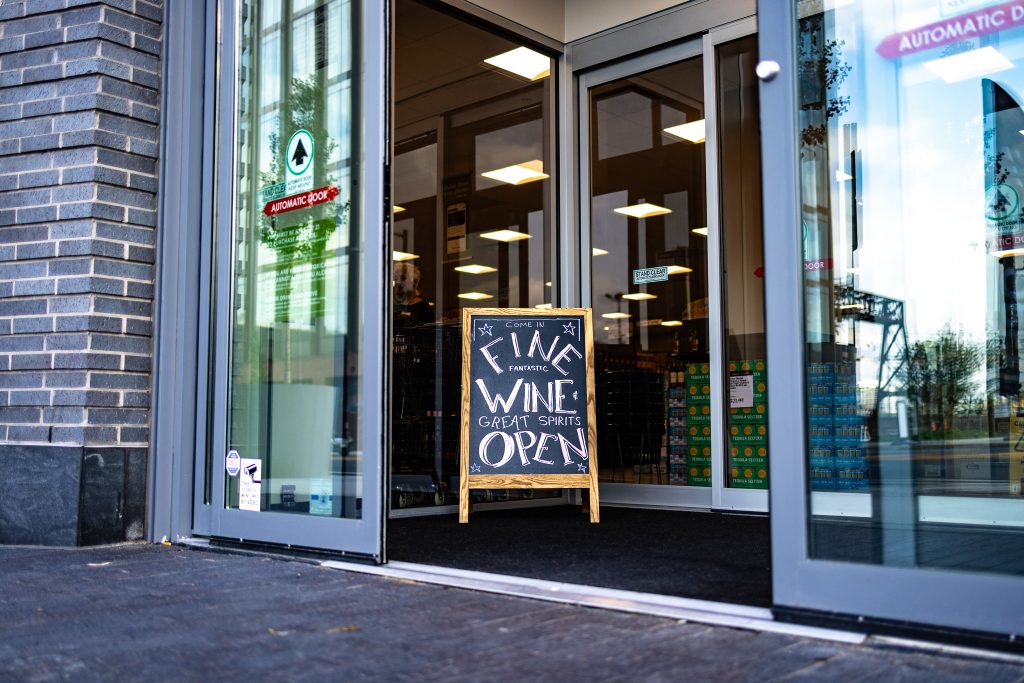
Drexel has become acquainted with a new, extremely local liquor store this past term: a Fine Wine & Good Spirits location that opened on April 10 as a part of the Schuylkill Yards development.
Situated on the ground floor of 3151 Market Street — a sleek, newly-completed 14-story building dedicated to labs and office space — the state-run liquor store now sits at the heart of campus, bordered by Drexel academic buildings, student apartments at University Crossings and soon, a new Starbucks also planned for the ground floor.
While reminiscent of other Fine Wine & Good Spirits stores across Philadelphia, this one stands out for its unmatched convenience. At 7,700 square feet, it offers a wide-ranging selection that caters to everyone from the casual student buyer to the seasoned enthusiast. Before its arrival, the closest FWGS stores to campus were at 4233 Chestnut Street and 21st and Market — both a considerable walk for students and residents in University City.
What does having a wine and spirits store steps from classrooms and dorms mean for Drexel students? For professors Serena Zelezny and Paul O’Neill, who teach HRM 435: Wine Regions of the World to Drexel’s 21+ students, the new store could offer more than just convenience; it may create valuable opportunities for mindful consumption and cultural exploration.
Zelezny is a wine educator and the founder of “What Am I Drinking?!,” a wine education studio based in Bryn Mawr, PA. O’Neill, an assistant clinical professor with over 25 years in the food and beverage industry, specializes in beverage studies and front-of-house service. Both shared their thoughts with the Triangle on the arrival of wine retail at Drexel’s doorstep.
“I think this is a great opportunity for student access,” said O’Neill. “Students of mine in past terms have formed tasting groups outside of class, so having this store open makes it more convenient for those in and around campus.”
Zelezny echoed the sentiment, highlighting how the store could enhance experiential learning. “Having a wine store on campus gives students better access — not just to purchase wine, but also to engage with wine in a way that feeds curiosity, cultural appreciation, and personal discovery,” she said.
In their classes, both professors focus on a mindful, systemic approach to tasting rather than simply consuming for effect. The new store may help students continue that learning in a real-world setting. “Many students enjoy sharing what they’re learning with friends and family,” Zelezny noted, “and having a store nearby provides easier access to continue that exploration in a more casual setting.”
For students who are new to wine, the professors had practical tips. O’Neill recommends comparing wines of the same grape from different regions — such as a New Zealand Sauvignon Blanc and a French Sancerre — to understand stylistic differences and personal preferences. He also advises against starting with overly sweet wines like Moscato, which can make drier wines seem bitter by contrast.
Zelezny encourages a sensory-first approach: “Slow down and take in the full experience. Smell the smells, and think about how it evolves with each sip. Each thoughtful encounter with wine builds new connections in the brain.”
Her favorite entry-level wines include citrusy Spanish Albariño, light and fruity rosé, and approachable reds like Pinot Noir. For those who enjoy sparkling wine, Prosecco is an accessible and festive option, especially for graduation season.
O’Neill shared wallet-friendly purchase recommendations, priced at under $20, that students can find at the new store:
Sparkling: Mumm Brut Prestige
White: Whitehaven “Windward” Sauvignon Blanc (2023, Marlborough)
Rosé: Mastroberardino “Lacrimarosa” Rosé (2023)
Red: Bodegas Ego “Infinito” (2019, Jumilla Monastrell)
Of course, the presence of a wine and spirits store near campus also raises concerns about misuse and normalization.
“Increased access.. comes with potential risks — particularly around unsafe consumption or normalizing alcohol in ways that could be unhealthy,” Zelezny acknowledged. “These are real concerns, and we should take them seriously.”
She believes that, paired with the right messaging and education, the store could also support a shift toward more mindful and community-based drinking habits, like opening a bottle over dinner or exploring regional wine styles with curiosity.
As educators, both O’Neill and Zelezny stress that responsible consumption is not humorous.
“Overconsumption in one sitting and over an extended period of time can cause serious effects to one’s health,” said O’Neill. “Drinking responsibly should not be a cliché term one hears at the end of a beer commercial! Slowing one’s intake, hydrating and then hydrating some more, and talking about the real-life ramifications of overconsumption in a thoughtful and honest way as opposed to setting up a punchline are ways I try to drive this point home.”
For Zelezny, wine education is never about promoting drinking — it’s about engaging with history, geography and personal taste. “I encourage everyone, including our students here at Drexel, to approach wine with curiosity and intention… I believe this kind of thoughtful approach makes wine more meaningful, more interesting, and ultimately much healthier.”
While the new Fine Wine & Good Spirits may just be another minor convenience to many, it could very well signal a cultural shift for Drexel students — one that might risk enabling excessive drinking among students, or, more optimistically, invite a deeper appreciation for wine as a tool for cultural exploration and learning. As the store settles into the University City landscape, Professors O’Neill and Zelezny are hopeful it can serve as a starting point for both educational engagement and personal growth.


